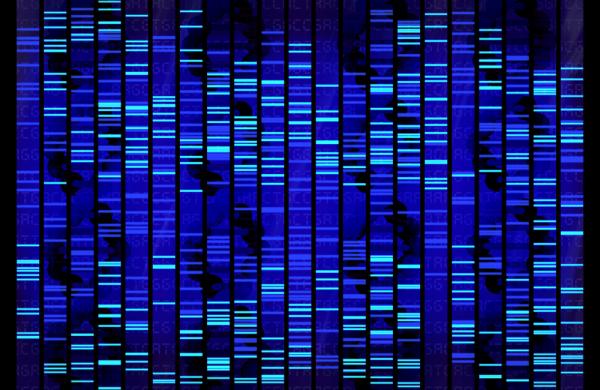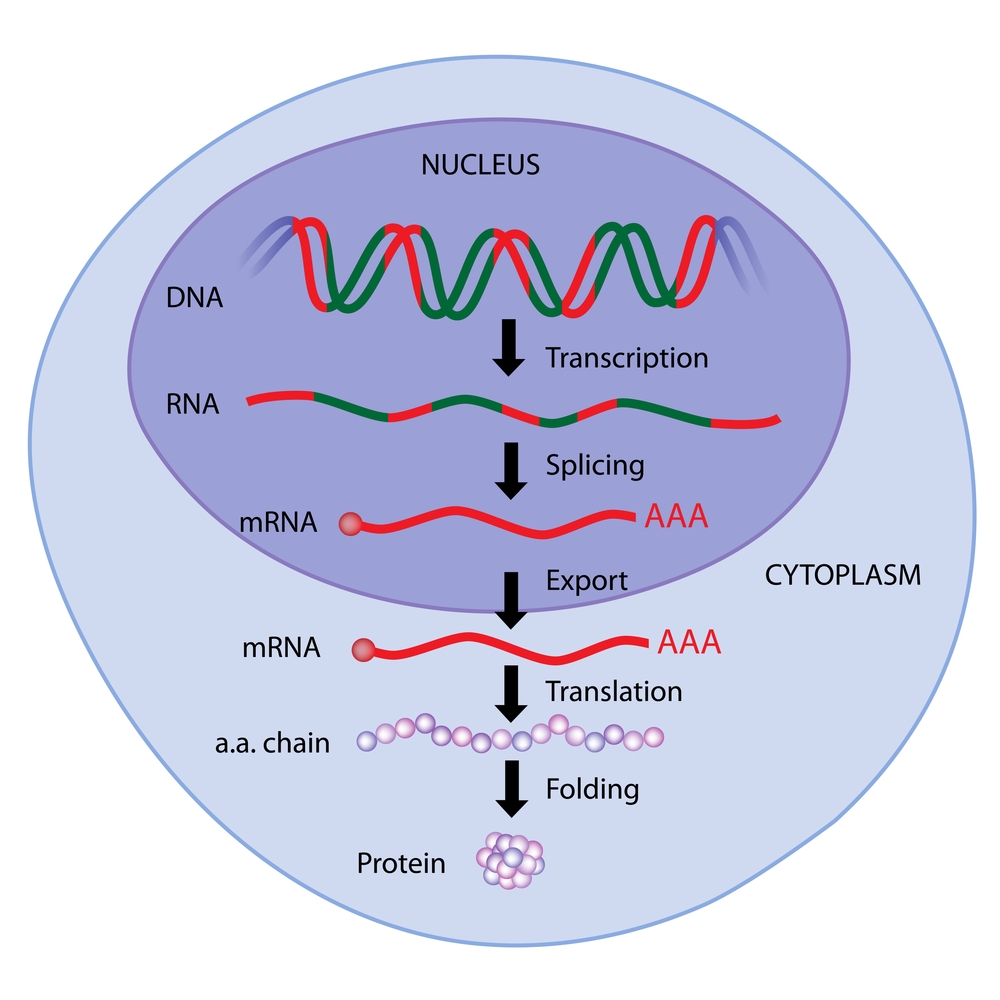
It is common knowledge that the information that makes us unique is held in our DNA. But, how does our DNA make our eyes brown - how does it make us who we are?
In order to understand that, we have to walk through the journey of how the information held in DNA becomes protein. The process is called the 'central dogma' and it was first described by Francis Crick at an annual meeting of the Society of Experimental Biology in 1957 - and published one year later. It is a tenet of not only molecular biology, but all biology, and is central to all life.
The central dogma is both simple and, at the same time, incredibly complex. There are many different players driving different complicated processes. In its simplest form, it starts with DNA - a nucleic acid. But, DNA does nothing more than hold the information. That information needs to be converted into a form that can ultimately, make proteins. It is the proteins that will eventually work together to make up all of the components of our cells, tissues and organs.
The information does not go straight from the DNA into protein. Instead, it goes through an intermediate step - the RNA. RNA is similar to DNA, but different enough to be able to serve a different function. Because the RNA is made directly from the DNA (through a process called transcription) - it can keep the information from DNA intact. But, the RNA can take that information on to the next step in the process. DNA is made into RNA by many proteins, but, the main player is the enzyme called RNA polymerase.
The RNA made through transcription is necessary to perform many functions in the cell. But, one of the forms of RNA made is called messenger RNA (mRNA,) because it acts as a messenger of the part of the DNA that carries the instructions for making proteins. The process of turning an mRNA into a protein is called translation and is done by an enzyme called a ribosome.
The key aspect of this entire process is the transfer of information. The DNA is made up of four nucleotides (A,C,G,T) that are found in a particular order in each of us - our DNA sequence. That sequence is mostly the same between you and me - all humans share over 99% of our genome simply because we are human. However, it is the sequence of those bases that determines specifically, which proteins get made. And, those proteins are what forms our cells, making eyes brown, or an immune system deficit or a gene that causes cancer overactive. But, regardless of what information is held in that DNA sequence, is it absolutely critical that the sequence is transcribed and translated accurately throughout the process of the information being passed along to make proteins.
The central dogma is a process at the heart of all living things. In fact, it is so critical to all life and the players are so well designed, that it happens similarly in all animals, plants and even bacteria. It is a cornerstone of life and a process that needs to be understood, if we are to hope to understand the more complex scientific processes going on in our world today.
Francis Crick wrote, in his seminal paper,
"The central dogma. This states that once 'information' has passed into protein it cannot get out again. In more detail, the transfer of information from nucleic acid to protein may be possible, but, transfer from protein to protein, or from protein to nucleic acid is impossible. (1) Information means here the precise determination of sequence, either of bases in the nucleic acid or of amino acid residues in the protein."

Note:
(1) Now, almost 60 years later, we know that Crick's statement is not entirely correct and that information can be transferred from one protein to another protein. These are called prions and will be the subject of a future article, because they are so mind-boggling - they deserve their own 800 words.



